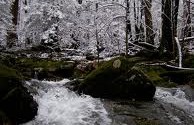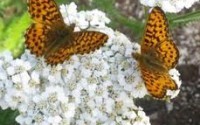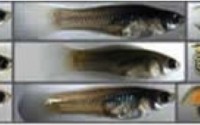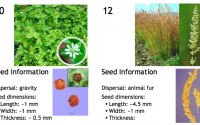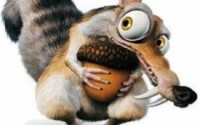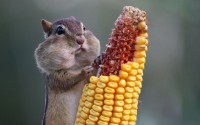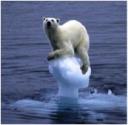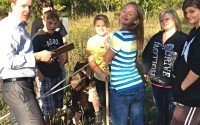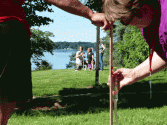Using a simple inquiry exercise, a short presentation, readings, and discussion, you will explore how water and winter interact in temperate lakes and ponds. From the properties of solid and liquid water to the effects of biannual nutrient turnover through freezing and thawing, this lesson will highlight how winter dictates the ecology in temperate lakes. It ends with current event tie-ins that will get your students excited about ice in their daily lives. At the conclusion of the lesson, students will be able to: List the unique properties of water Hydrogen bonding Ice is less dense than water Water is most dense at 4°C Explain how turnover affects nutrients, plants and animals in a lake Explain how the density of water at certain temperatures causes turnover to happen To complete this lesson in full will take two 50-minute periods. The […]
Pollination: what’s on your flowers? Observing and quantifying pollinator visitation
Students explore mutualistic interactions by focusing on pollination. Do flowers attract specific or a variety of pollinators? Students hear a presentation on mutualism and pollination in particular, and the go outside and use actual observations and data collection to discover what types of pollinators visit flowering plants in their vicinity. The lesson is adaptable to multiple topics, grade levels, and habitats. At the conclusion of the lesson, students will be able to: Explain the major kinds of interspecific interaction Explain what pollination is and how it works Identify one or more species of local flowering plants Identify pollinators by broad or narrow group, depending on age of students Collect pollinator visitation data in a scientifically rigorous way Discuss some of the ecological factors affecting composition and abundance of pollinator communities Presentation: 20 minutes Field: 30 minutes (plus time to get […]
Effect of fish on pond invertebrate community structure
This lesson offers an introduction to aquatic invertebrates living in ponds, and a look into how the presence or absence of a top predator – fish – affects the community composition and structure. This is a lesson teachers can do at KBS if they are interested – just contact Gary Mittlebach. At the conclusion of the lesson, students will be able to: Display familiarity with techniques used to sample aquatic invertebrates Describe how predators influence prey community composition and structure Identify several major groups of aquatic invertebrates Use microscopes to examine zooplankton If classes want to come out to the KBS pond laboratory, we would suggest allowing at least a half day to spend on the facilities. This will allow time for an introduction to the history and research done at the pond lab an introduction to the study system […]
Natural Selection in the Classroom
Semester-long projects that will allow students to see evolution in action In this lesson, teachers explore potential semester to year-long evolution lessons that will enable the development of classroom lessons about evolution by natural selection. These lessons consist of long-term studies where change in populations over time is observed rather than simulated. At the conclusion of the lesson, teachers will be able to: Develop a long-term natural selection lesson for the classroom Plan for the effective measurement of traits and fitness Discuss and teach the 3 requirements for evolution by natural selection: phenotypic variation, relationship between a trait and fitness, and heritability of the trait. The lessons discussed are designed to be semester to year long, long term, experiments. The long duration is necessary in order to see a response to selection. This lesson is intended for either an Intro […]
Now Accepting Applications for 2013-2014 Teacher Partners
The KBS GK-12 Bioenergy Sustainability Project is now accepting applications for Teacher Partners for 2013-14. Teacher Partners are K-12 teachers from 15 local school districts forming the KBS K-12 Partnership for Science Literacy. Teachers are paired with GK-12 graduate student fellows in a year-long relationship.Teacher Partners provide fellows with K-12 classroom and teaching experience. Fellows work with teacher partners to improve curricula and student learning, in part by utilizing established schoolyard science research plots (BEST plots) in K-12 Partner districts. These partnerships offer graduate students an opportunity to bring leading-edge research practices and findings to K-12 learning settings. Graduate Student Fellows are meant to serve as role models to K-12 students and help stimulate their interest in STEM disciplines. Please see the application form for more details on the project and teacher partner responsibilities and benefits. To apply, please submit (1) this completed application […]
Weeds, Seeds, and Dispersal! December workshop recap.
Weeds, Seeds, and Dispersal! That was our theme for the December 5th KBS K-12 Partnership workshop. Our plenary speaker for the day was Dr. Joe Dauer, MSU research associate in Plant Biology. We learned that when he is not wearing his ‘weed ecologist’ hat, Dr. Dauer makes ‘the best pancakes’! We did not get any pancakes but we did get to hear his talk: ‘Going the Distance: Investigating dispersal across scales’. Dr. Dauer began with a discussion on investigative ecology. How and what do you investigate about weeds? One question would be – why do we see a patchy distribution of weeds and not an even distribution? Another could be – what is the role of humans in facilitating the movement of weeds or controlling it? During the talk we considered two methods of dispersal: wind and soil. When considering […]
Weeds! Tricks of the Trade
This lesson will explore how plant traits like seed dispersal (e.g., wind-dispersed, animal-dispersed, etc.), seed hardiness, and land-use history influence the assembly of weed communities following a major disturbance (e.g., construction of a BEST plot, agricultural field, or garden plot). The focus will be on volunteer species (read: weeds) most commonly found in the BEST plots across the network. The lesson begins by providing students background information on seed traits and land use legacies. After covering this information, participants will do a brief activity that involves making predictions about which plant traits make weeds made most successful. Students will spend the remaining portion of the lesson analyzing and interpreting volunteer species abundance data from the BEST plot network. At the conclusion of the lesson, students will be able to: List and describe four different plant dispersal mechanisms Describe three determinants […]
Seeds on the Run: A Model of Seed Dispersal
In the 1970’s, an influential ecological hypothesis was developed by two tropical biologists trying to explain the distribution of trees in the hyper-diverse rainforests of planet Earth. We use a deceptively simple board game as a model for students to explore how two basic concepts (dispersing far is hard, and living at high density is dangerous) can be combined to explain this baffling natural pattern. We show you how to interactively lead students through the predictions of the hypothesis, give you the tools to collect data from the game itself, and finish by graphing and discussing our board-game data. At the conclusion of the lesson, students will be able to: Explain dispersal in an ecological context including why dispersal is important and the challenges of dispersal Make predictions based on ecological concepts Understand the principles of the Janzen-Connell hypothesis Graph […]
Another Fellow in the News!
Congratulations to Fellow Elizabeth Schultheis who has been selected as a recipient of a Dr. Marvin Hensley Endowed Fellowship in Science. Way to go, Liz!
The Double Life of A Squirrel: Seed Disperser and Predator
Because they cannot move, plants have developed a diverse range of strategies to spread their genetic material: from producing tasty fruits to entice birds and mammals to encasing seeds in structures that can be carried off by the wind. Small mammals, like squirrels and mice, can be both beneficial and destructive for plant seeds – they serve as dispersal agents, moving seeds far from parent plants and into beneficial habitats, or as predators, consuming seeds before they have had a chance to germinate. Using squirrels as a study system, we will explore importance of squirrel behavior human disturbance influencing seed dispersal. In this lesson, we discuss dispersal and predation as major forces determining the fate of a seed. We will conduct an experiment where we measure squirrel removal of seeds from a seed trap to determine their activity in a […]
We are now accepting Fellowship applications for 2013
The KBS GK-12 Bioenergy Sustainability Project is accepting applications for graduate student fellowships for 2013-14. This graduate training project is funded by grant from the NSF Division of Graduate Education. Fellowships are intended for students who have completed at least their first year of graduate coursework. The NSF GK-12 program is meant to advance the professional development of STEM graduate students while they continue to make good progress on their dissertation research. NSF stipulates that fellows will spend a maximum of 15 hours per week directly involved in GK-12 project activities, with approximately 10 of these hours devoted to activities in K-12 partner districts or at KBS. KBS activities will include a one-day orientation in May, an intensive summer science institute in late June, two one-day school year workshops and weekly Friday fellows meetings associated with a course focused on the professional development of […]
Dividends from Diversity
This lesson takes the student from understanding the meaning of biodiversity to understanding how important it is in real ecosystems. Using the insects captured during the BEST Plots Invertebrate Diversity Protocol, students play Bug Bingo and have fun while recognizing differences in diversity from place to place. Then, students play the Biodiversity Stock Market, to demonstrate the importance of biodiversity and the consequences of eliminating diversity. Additionally, the game will demonstrate the many economic benefits provided by high levels of biodiversity through valuable ecosystem services. At the conclusion of the lesson, students will be able to: Understand what biodiversity means in the scientific community Recognize several insects to order Understand that diversity differs from place to place, and is declining. Understand that biodiversity has economic and social benefits Understand that high levels of biodiversity improve ecosystem productivity and stability Recognize […]
The Best Genes for the Job: Exploring genotype by environment interactions
An organism’s genetic composition plays an important role in its chances of survival, but will the same combination of genes always win? An organism, (or more specifically, a set of genes) that succeeds in one environment or season may not fare so well under different conditions. In this lesson plan, students will explore how genetics and environmental conditions can affect the survival of different organisms. This classroom activity simulates how birds with different beak sizes might have a competitive advantage depending on environment. Students will then graph their data to see how environment influences the success of different genotypes. At the conclusion of the lesson, students will be able to: Explain how survival of an organism is affected by both its genotype (nature) and its environment (nurture) Understand environmental factors that contribute to the varying success of organisms, including climate, seasonal […]
The New Farmer’s Almanac: Agriculture and Climate Change
In this lesson, students learn about the difference between climate and weather and how we expect Michigan’s climate to change. They use real data from the Kellogg Biological Station’s agricultural Long Term Ecological Research site to predict how specific crops may respond to climate change. At the conclusion of the lesson, students will be able to: Explain the difference between climate and weather Name three ways the Michigan climate is expected to change Show how some crops may improve with climate change while others decline Resources: Lesson plan Agriculture and Climate Change powerpoint Student worksheet LTER Climate Change data (Excel file) Lesson written and created by GK-12 fellows Tomomi Suwa and Anne Royer, 2012
The climate is changing…but will it change me?
This lesson takes a look at some of the ways that climate change may directly affect the life of a Michigander. It includes several opportunities for discussion about student’s observations and their connection to data. Using an internet-based weather forecasting tool for Michigan, students will complete an activity that allows them to visualize how several climatic changes will affect their lives. At the conclusion of the lesson, students will be able to: Describe three different climatic changes that scientists are predicting for Michigan Provide examples of how those changes will affect their and their families day-to-day lives Draw conclusions based on maps and simplified data (For more advanced students) Use internet tools and data to make predictions about additional climate scenarios Resources: Michigan climate change lesson plan Changing climate powerpoint Michigan climate change activity pages Internet resources Lesson written and […]
Why fly south? How climate change alters the phenology of plants and animals
The timing of recurring life cycle events for plants and animals, like flowering and migration, are largely determined by cues organisms take from the climate. Scientists who study phenology, or the timing of these natural events, are interested in how climate change, particularly rising global temperatures and unpredictable transitions between seasons, will influence the timing of phenological events. For example, what can we expect to happen to the migration timing of birds, the mating season for animals, or the flowering times in plants? Further, how might abiotic seasonal changes like melt dates for lakes and rivers respond to climate change? To answer these questions, scientists turn to long-term datasets to examine whether shifts in phenological events are occurring over extended periods of time. Long-term datasets are extremely useful because scientists can examine average trends in timing shifts over periods of […]
It’s Gettin’ Hot in Here!: Consequences of Climate Change on Flora and Fauna
While public policy on climate change continues to be debated in local and national governments, the effects of global warming are already being felt by many different plant and animal populations. Rising temperatures can directly impact plant and animal populations by causing range shifts as species are forced to move into areas with temperatures they can tolerate. In the process of shifting home ranges different species that were previously isolated from one another may come in contact, leading to new biotic interactions (whether they be predator-prey, host-parasite, or resource competitor interactions). In this lesson, students will be introduced to the basics of climate change research. Specifically, focusing on the impact climate change will have on the plant and animal populations. We will investigate a number of specific aspects that will be directly impacted through climatic changes, with a number of […]
Delton Kellogg Fellow report
by Michael Kuczynski, October 2012 This fall, Mrs. High’s highschool students at Delton Kellogg had the opportunity to get outside and do a little research on the bioenergy plots. Different classes focused on collecting different sets of data, all building towards an answer to the question “Can we grow grass or flowers for our fuel and save the butterflies too?” In the morning students were clipping samples of biomass from the plots to investigate how we can maximize biofuel production while using the least amount of land. Everything went very smoothly and the most challenging part for the students seemed to be keeping warm while working. In the afternoon we set up pitfall traps and sticky traps to catch invertebrates in the plots. We quickly realized that the rocks in the soil was making it a bit difficult to dig […]
Fellow report from Harper Creek
October 2012, by Cara Krieg The students of Harper Creek have been learning about biodiversity! Mrs. Joostberns’ 4th graders ventured out one chilly morning to uncover the treasures waiting for them in the invertebrate traps that were set out the week before. The students discovered that many fliesand bees stuck to the sticky traps placed above the plants. In contrast, cups buried in the ground caught many worms, ants, and beetles. Because of the heavy rains the weekend before, many of the cups flooded and some of the insects were still alive! A giant grasshopper became the star of the show before I returned it safely to its home in the BEST plots. The students were excited to see invertebrates in all different shapes and sizes. The data collected that morning will be combined with the same measurements already taken at Harper Creek […]
Lawton’s mini-BioBlitz – Fellow Report
October 2012, by Anne Royer Marcia Angle’s 8th-graders at Lawton adventured out into the fall weather to explore the plants and animals living in their BESTplots. We started with insect biodiversity. After learning how to randomize the location of our traps, we sacrificed two dice to the prairie gods and left the traps out for a week. Our sacrifice was acceptable, and we were rewarded with an abundance of insects and one rotten smelly mole. Being a good fellow, I threw the mole back in the plot it came from, and we took some dead-mole-smelling insects back into the classroom to identify and count. (Most of the insects just smelled like dead bugs, i.e. roses.) We had a great time discovering what we’d caught. A few days later the same students braved a frosty morning with plant identification booklets in […]
Why is there variation in personality type? Does fishing impact the variation?
Students simulate bass populations with and without fishing pressure, gather data from the simulation, analyze it by making graphs, and draw conclusions about what maintains variation in personality type and how fishing could cause evolutionary change in personality in populations that are fished. At the conclusion of the lesson, students will be able to: List the three requirements for evolution by natural selection Phenotypic variation in a trait exists within a population The phenotypes must be heritable Some phenotypes have higher fitness than others Determine whether evolution happened in a given situation and how it happened. Explain potential ecological and evolutionary effects of not using natural resources in a sustainable manner Resources: Lesson Plan Worksheet Selection on Personality Presentation
The Hunger Games: Hiding in Plain Sight – Exploring evolution using mimicry
Evolution is one of the most fundamental concepts in biology. The process of evolution by natural selection has produced some of the most spectacular traits found in living organisms. In this lesson students will explore the concept of evolution by natural selection using mimicry as an example. Mimicry refers to a similarity between more than one species for the purpose of protection. For example, a non-poisonous species may closely resemble a poisonous species, and this resemblance protects the non-poisonous species from predators. In this session, students will play a scavenger hunt game using Easter eggs to demonstrate the benefits of mimicry and the conditions under which mimicry can evolve. At the conclusion of the lesson, students will be able to: Understand the process of evolution by natural selection and be able to identify/explain its three components Understand that populations evolve, not […]
Geeked About Beaks: Inquiry learning about survival and reproduction
In this lesson, students will learn about survival, reproduction, selection, adaptation, and evolution all while playing hands-on games and constructing their knowledge through experience. Students get to be birds and compete against their classmates to eat the most seeds. This activity demonstrates how small beaks are better at getting small seeds, whereas large beaks are better at getting large seeds. Next, students become part of a bird population with a variety of beak sizes. Depending on the weather, big, small, or medium seeds are common that year. Students observe how populations change over time based on the environment. Students explain why the population changes over time, and they also make predictions about what will happen to the population in future years. At the conclusion of the lesson, students will be able to: Describe how physical characteristics of an organism affect […]
Fellow Report from Olivet Middle School
October 2012, by Jake Nalley The eighth graders in Mr. Stolberg’s Earth Science class at OlivetMiddle School wereabletospend some well-deserved time outside as they were introducedto the BEST plots. To gain a better understanding of how the surrounding lands can influence the plots the students ran the small-scale landscape protocol. Students wereseparated into two groups, Team Landscape and Team Elevation. Team Landscape identified how the land was being used for the fifty meters surrounding each side of the plots. Team Elevation got to learn how touse a water level, and also determine the slope of theland surrounding the plots. Through the hard work of all the 8th graders, we were able to determine that the land surrounding the plot is primarily unmanaged, naturally occurring field, except for the parkinglot that is twenty meters to the south of the plots. Also, both […]
Fellow Report from Gull Lake Middle School
Sept 2012, by Tomomi Suwa The sixth graders from the Gull Lake Middle School took advantage of this beautiful fall weather and spent some time outdoors at the BEST plots. To learn about differences in invertebrate diversity in different habitats, students set up two types of traps (sticky traps and pitfall traps) in the BEST plots, right outside their building. One week later, they collected the traps and tried to identify and count the invertebrates they found. In the sticky traps, they caught many types of flies and wasps and even grasshoppers and ladybugs. In the pitfall traps, they found spiders, beetles, and other types of crawling invertebrate species. Some students were a little scared to watch the dead creatures at first, but most of them got really excited to find so many different kinds of invertebrates in the trap. We […]
Introducing the new GK-12 program coordinator
Hi, my name is Sarah Bodbyl Roels. You may remember me from the 2012 Summer Institute, when I gave an invited plenary talk about my doctoral research at the University of Kansas. I have been hired by KBS as the new GK-12 program coordinator and I am currently working alongside Robin Tinghitella as she transitions to her new faculty position at the University of Denver in Colorado. Please congratulate Robin on her new job and thank her for many years of hard work developing the KBS GK-12 program. About me: I am a native Michigander, growing up in Cutlerville, just south of Grand Rapids. I majored in biology at Calvin College and then moved to Kansas to pursue a doctorate in Ecology and Evolutionary Biology. I am a self-professed biology nerd and I love science! I am broadly interested in […]
Fall 2012 Workshops Scheduled
Our KBS K-12 Partnership Fall Workshops have been scheduled! Mark your calendars for October 3rd and December 5th. Our October 3rd workshop will focus on the theme of “Communicating Climate Change” and we’re pleased to have KBS Faculty member Steve Hamilton as our guest plenary speaker. We’re looking forward to it! Email Robin and Sarah at kbsgk12project@kbs.msu.edu for more information. We’re looking forward to seeing you!
2012 KBS K-12 Summer Science Institute Wrap-Up: A Magical Week of Making Movies.
By Guest Blogger and K-12 Partnership Volunteer Extraordinaire Joelyn DeLima A magical week of making movies. That is the first thing that comes to mind when I describe the days from June 25th to 29th at KBS. The KBS K-12 Partnership Summer Science Institute was more than just sitting around learning science in input-driven sessions and discussions. This year the teachers, led by the returning fellows (Michael, Tomomi and Tyler), worked on preparing movies based on the three different sets of protocols that are conducted on our BEST Plots Research Network. The aim of this exercise was to prepare 60-75 second videos introducing the protocols in a manner that would spark a student’s interest. They could also be used as an overview for anyone interested in performing these protocols. The entire endeavor, which took place on Monday afternoon and all […]
Algal Biofuels: An Emerging Renewable Energy
In this lesson, students will explore the basic living requirements of algae (aka phytoplankton) through hands-on experience and an interactive game. We will investigate what algal biofuels are, how they are made, where they can grow, and, most importantly, why this topic should be investigated. The lesson is constructed with 2 short presentations, an optional water sampling event, identification of common phytoplankton, and a team outdoor game. At the conclusion of the lesson, students will be able to: Explain what phytoplankton are and what they “consume” Gain compound microscopy experience Identify some common phytoplankton species Explain the importance of bioenergy in contrast to fossil fuels Describe the benefits of biodiversity, and define community ecology Be excited about microorganisms Resources: Algae Biofuel Lesson Plan Phytoplankton Preview Powerpoint Phytoplankton Preview Key This lesson was created by KBS GK-12 Fellow […]
Cannibalism: Is it ever a good idea?
In this lesson, students explore how different competitive strategies will affect how well organisms survive in a population. Students will play a game simulating several strategies in different environmental conditions (including cannibalism!), collect data from the game, and use these data to draw conclusions about the success of their strategies. The results of the game can be used to discuss how kin selection may influence evolution. At the conclusion of the lesson, students will be able to: Graph their data and draw conclusions based on their results Explain how environmental conditions impact the success of different evolutionary strategies Explain how kin selection might affect evolution in a population Resources: Cannibalism Lesson Plan Accompanying Powerpoint Presentation Cannibalism Rule Sheet Cannibalism Worksheet The lesson was created by GK-12 Fellow Sara Garnett, 2012
Angry Birds: Exploring Behavioral Trade-offs
Animals have limited supplies of energy and often must choose which activities to focus on at the expense of others. In this activity students will play a game that explores the trade-off between aggression and parental behavior. In part A, students will explore the role of aggression in acquiring a territory. In part B, students will explore the trade-off between parental behavior and aggressiveness and learn there are multiple ways to be successful. At the conclusion of the lesson, students will be able to: Explain how aggression impacts an organism’s success. Explain how environmental characteristics shape the benefits of aggression. Explain the tradeoff between aggression and parental behavior. Resources: Angry-birds-lesson-plan Angry birds- strategy cards Angry Birds-offspring cards Angry-birds-student-worksheet Angry Birds-Post Questions Answer Key Lesson created by GK-12 Fellow Cara Krieg

